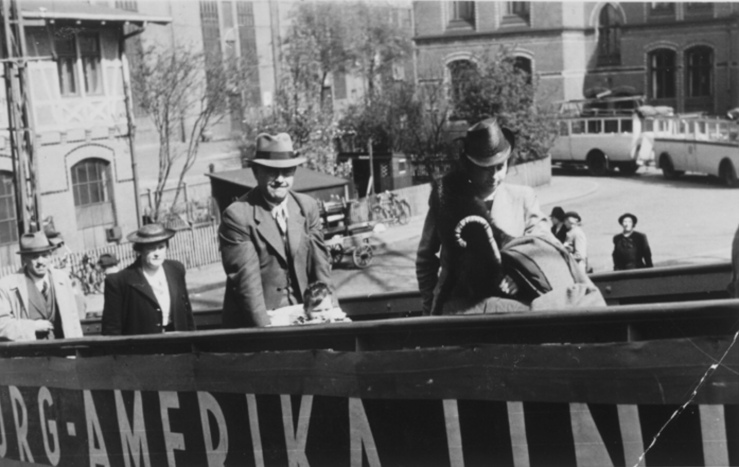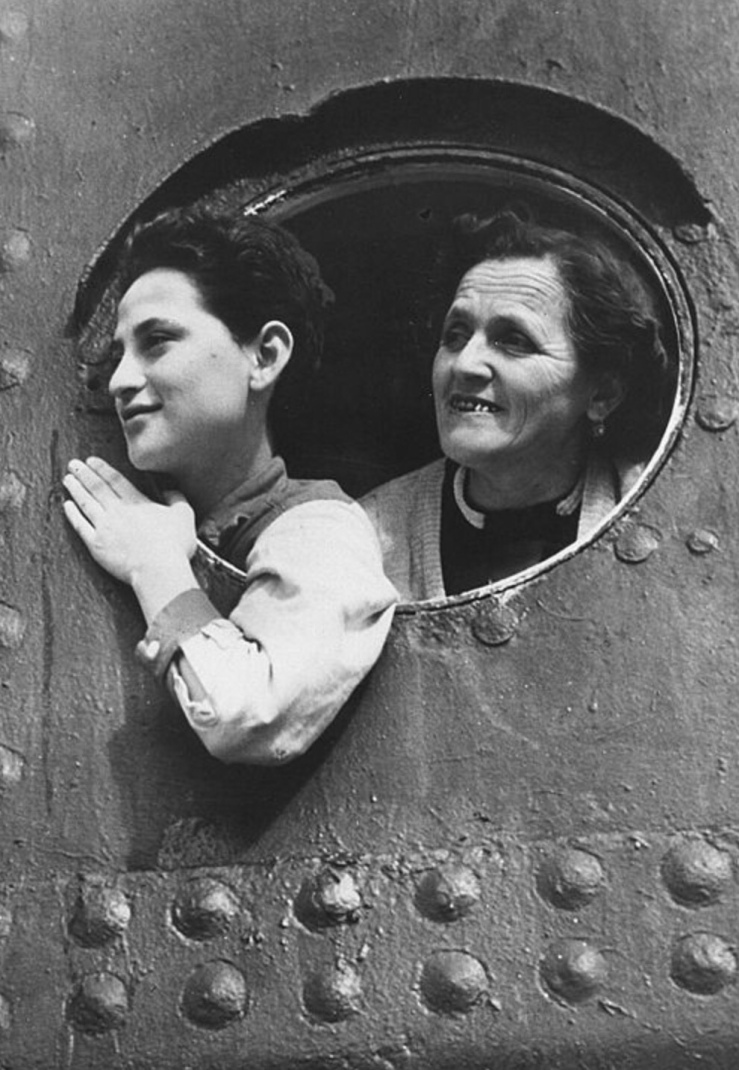Eighty years ago, this May-June, an ocean liner was refused docking in Cuba, the United States and Canada. And why? Because the passengers were mostly Jews fleeing Germany and Hitlers oppression and violence. We have seen the same thing, seventy years later. Syrians, Rohingyas and South Americans fleeing their war-torn countries and the president of the United Sates giving preference to those with “Christian” beliefs. I was born and raised in the protestant faith, and the one that I have tried to continually live by is LOVE.
A couple of years ago we were all shocked and sadden to see the body of the little Syrian boy washed upon the shores of Greece. A child. His life had not even started and yet he was dead, why? Fear. Fear of what people don’t understand, just like today and just like seventy years ago.

The St. Louis
The St. Louis was a German ocean liner that departed Hamburg, on May 13, 1939 bound for Cuba. The passengers had spent huge sums of money to get on the ship and to get out of Germany. The ticket cost $150 per person (about $2,500 today), plus most had also paid the Cuban embassy between $200-$300 for their Cuban visa (about $3,000-$5,000). So, this was not a cheap journey.
Six months before the St. Louis set sail, Kristallnacht (the Night of Broken Glass) had swept through Germany. That night left 91 people dead, countless Jewish homes, businesses and synagogues destroyed. Gisela Feldman’s father was rounded up that night and sent to Poland. He begged her mother to wait for him before they left Germany, but her mother knew the most important thing was to get Gisela and her sister, Sonja, out of Germany. Gisela was 15 when she boarded the St. Louis. Her mother had been so very brave to take two teenage girls and leave their father behind in Poland, all to save the lives of the girls. They were waved off by dozens of relatives from the dock, most they would never see again.
When Gisela, Sonja and their mother fled Germany, they had Cuban visas. Their mother had 10 German marks in her purse and another 200 German marks sewn into her dress. This was all to flee the hatred permeating Germany and start a new life in Cuba.
Gerald Granston was six years old when he boarded the St. Louis with his parents. They had fled their small southern German town and young Gerald had no idea what was to come and where they were going, he didn’t know what or where Cuba was.
The St. Louis was captained by Gustav Schroder. Captain Schroeder had directed the wait staff and ships crew to be polite to the passengers, 937 people almost all Jews. They would get better treatment on the ship than they would at home from their neighbors and countrymen.
In a 2014 interview, Gisela reflected about how happy her time was on the St. Louis. The dances, cinema and walks along the deck with boys her age. It was a happy time for most on board, they were sailing to freedom.

The Trouble Begins
On May 8, 1939 a huge demonstration took place in Havana with over 40,000 in attendance and thousands more listening to the radio broadcast by Primitivo Rodriguez urging Cubans to “fight the Jews until the last one is driven out”, this included the already 2,500 Jews admitted to Cuba.
The Nazi’s had agents on the ground in Cuba that worked with the right-wing groups to put out propaganda and hate speech against the Jews trying to flee Germany. Claiming that the Jews were communists.
When the St. Louis arrived on May 27, 1939 Cuban officials boarded the ship to go over passenger’s paperwork, when they boarded, they were smiling. When they left, they allowed only 28 to enter Cuba. Just a fraction of those who had paid large sums of money for their visas. For two weeks Captain Schroder tried to negotiate with the Cuban officials and was continually told “manana, manana” (tomorrow, tomorrow). But they were rejected, Cuba would take no more.
Captain Schroder sailed the ship close to Florida, so close that the passengers could make out the lights of Miami. Some of the passengers took it upon themselves to send direct telegrams to US President Franklin D. Roosevelt, which he did not answer. They were told by US Immigration that since the US had already taken in its quota of 27,370 German-Austrians that they would have to wait their turn through the asylum visa process, a wait list that took years and these people had only moments.
In fact, one passenger was in such despair about returning to Europe, he cut his wrists and then threw himself overboard into the open ocean.
The ship set sail back to Europe and docked in Belgium, where the American Jewish Joint Distribution Committee (JDC) had secured a $500,000 (around $8,000,000 today) to obtain visas to other countries for the refugees.

Back in Europe
Back in Europe and with the help of the JDC, because most countries that took in the refugees wanted a cash guarantee that they would go back home after the war, several countries gave visas to many of the passengers.
Gisela, Sonja and their mother, who had Cuban visas but were denied entry to Cuba went to the UK, as well as Gerald Granston and his family. They would survive the war. In 2014 Gisela was 91 and Gerald was 81.
Sol Messinger, who was another six-year-old on board, went to France with his parents, where they then had to flee, again, after the Nazi invasion of that country.
The Netherlands, and Belgium took in even more. The ship that left with 937 passengers would have 278 survive the war. The rest would perish is camps and marches, including many children.
The St. Louis was not the only ship to be turned around in Cuba. There was also the French ship Flandre and the British ship Orduna, between the two they had 176 Jewish passengers. Flandre returned to France and the Orduna sailed along the South American coast trying to find countries to take the refugees. They finally had success when they disembarked many of the passenger in the American controlled portion of the Panama Canal. The US eventually allowed most to enter the country.

The Aftermath
Newspapers around the globe carried the stories of these banished ships and their passengers. And yet, it did not soften the hearts of the country’s leaders or citizens. Earlier in 1939 both the US House of Representative and Congress, allowed a bill to die in community that would have raised the limit of German-Austrian immigrants to take in 20,000 children.
This past May 21, 2019 the Twitter feed of @stl_manifest ran the names and pictures of some of the people who died because they were refused entry into US:
My name is Lutz Grunthal. The US turned me away at the border in 1939. I was murdered in Auschwitz. (child)
My name is Manfred Fink. The US turned me away at the border in 1939. I was murdered in Bergen-Belsen. (adult)
My name is Joachim Hirsch. The US turned me away at the border in 1939. I was murdered in Auschwitz. (child)
My name is Adolf Grunthal. The US turned me away at the border in 1939. I was murdered in Gulleschau. (adult)
My name is Arthur Weinstock. The US turned me away at the border in 1939. I was murdered in Sobibor.
My name is Charlotte Weinstock. The US turned me away at the border in 1939. I was murdered in Sobibor.
My name is Ernst Weinstock. The US turned me away at the border in 1939. I was murdered in Sobibor.
This is a list that could go on and on and on, ten million dead are so very many people. That is more than twice population of Los Angeles. And the saddest part is that many of them did not have to die, if people had looked at the human being and not just the religion or their own fears and phobias.
Fear is the cause of so much hate that goes on today. If we replaced fear with love, we would see so much more loveliness that exist in this world and we would be much quicker to offer a helping hand.
As an American I am ashamed at what has been allowed to happen in the past and even today. I would like to see what the critics would do when everything the know is stripped away from them, their homes are bombed, their family members murdered, all because they have a belief different from someone else’s. America is a country founded on basic human rights, pursuit of happiness, life and liberty. We are allowed to practice whatever religion we choose, a right in our Constitution.
If people actually stopped for a moment and looked around, did their own research instead of relying on someone else, then they would see that what they fear, is already here. And those who want to come here, want to make this place better. They want what we take for granted- life, liberty and the pursuit of happiness.
I implore you to look beyond your fears and find out what you have in common with someone different, see where you can connect instead of disconnect. It would make this world a much better place.
Thank you for taking the time to read this blog. I hope that you will become a follower/subscriber, share it with your social media and email friends. I will be back in two weeks with more. See you in two weeks!



When will we ever learn? (I think Joan Baez has a song about that.)
LikeLike
Exactly. I just seems like we don’t ever learn.
LikeLiked by 1 person
Great article! Shocking that FDR sat on his hands too!
LikeLiked by 1 person
It truly is, so many leaders did it was just so very sad.
LikeLike
80 years ago.
LikeLike
Corrected, thank you.
LikeLike
80 years ago
LikeLike
Corrected. Thank you.
LikeLike